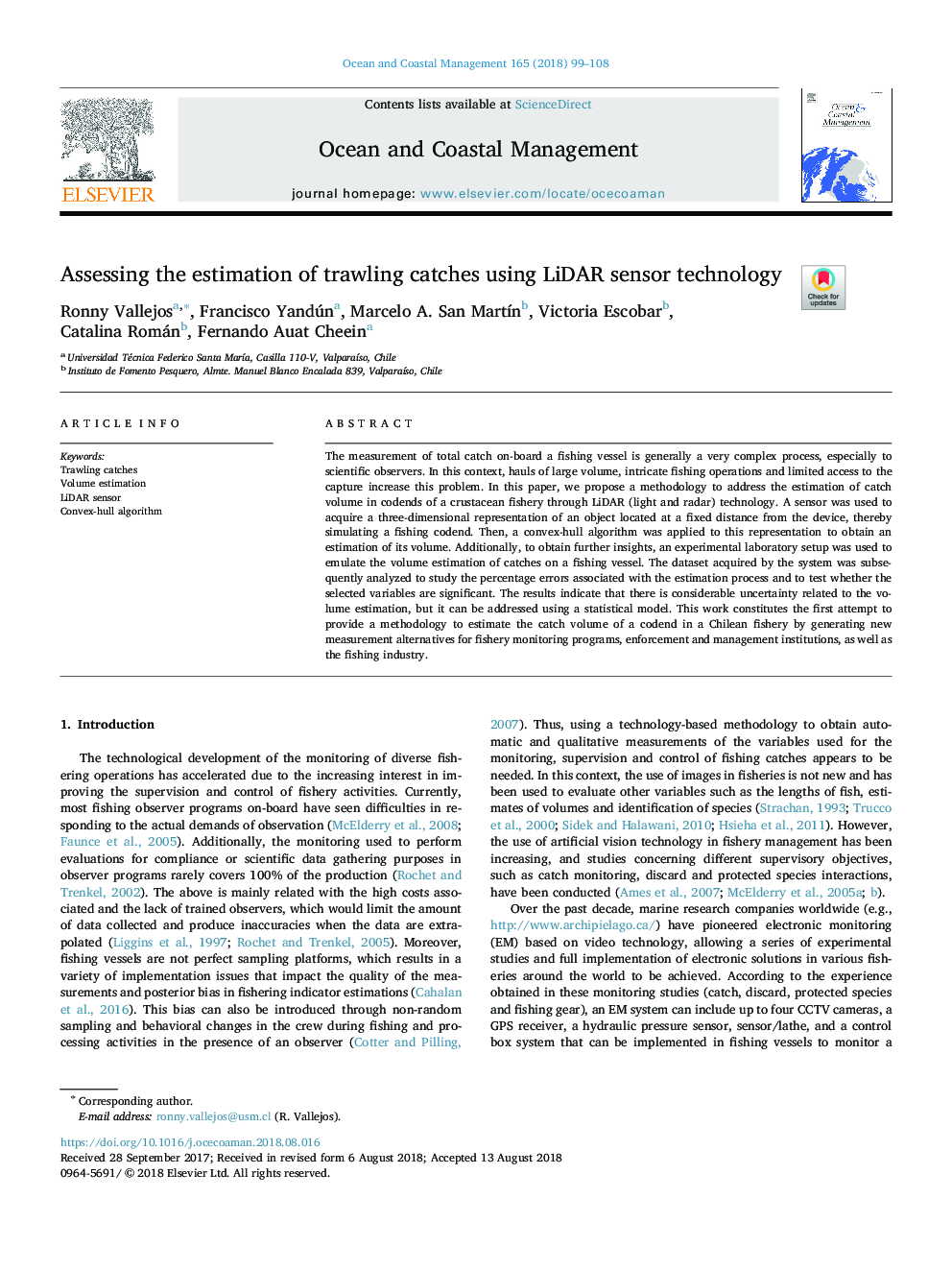| Article ID | Journal | Published Year | Pages | File Type |
|---|---|---|---|---|
| 9953597 | Ocean & Coastal Management | 2018 | 10 Pages |
Abstract
The measurement of total catch on-board a fishing vessel is generally a very complex process, especially to scientific observers. In this context, hauls of large volume, intricate fishing operations and limited access to the capture increase this problem. In this paper, we propose a methodology to address the estimation of catch volume in codends of a crustacean fishery through LiDAR (light and radar) technology. A sensor was used to acquire a three-dimensional representation of an object located at a fixed distance from the device, thereby simulating a fishing codend. Then, a convex-hull algorithm was applied to this representation to obtain an estimation of its volume. Additionally, to obtain further insights, an experimental laboratory setup was used to emulate the volume estimation of catches on a fishing vessel. The dataset acquired by the system was subsequently analyzed to study the percentage errors associated with the estimation process and to test whether the selected variables are significant. The results indicate that there is considerable uncertainty related to the volume estimation, but it can be addressed using a statistical model. This work constitutes the first attempt to provide a methodology to estimate the catch volume of a codend in a Chilean fishery by generating new measurement alternatives for fishery monitoring programs, enforcement and management institutions, as well as the fishing industry.
Keywords
Related Topics
Physical Sciences and Engineering
Earth and Planetary Sciences
Oceanography
Authors
Ronny Vallejos, Francisco Yandún, Marcelo A. San MartÃn, Victoria Escobar, Catalina Román, Fernando Auat Cheein,
